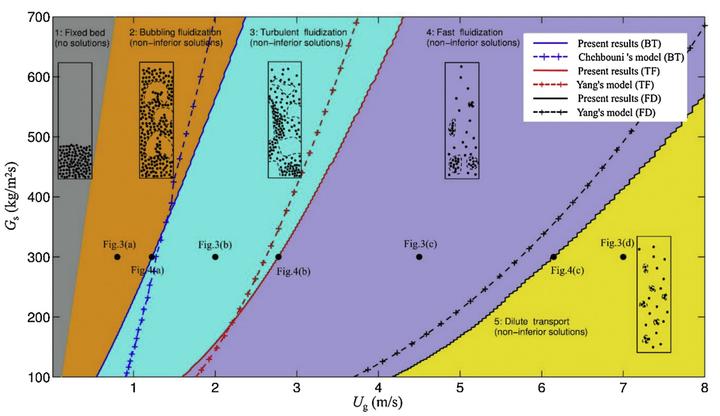
Abstract
Gas–solid two-phase flow is ubiquitous in nature and many engineering fields, such as chemical engineering, energy, and mining. The closure of its hydrodynamic model is difficult owing to the complex multiscale structure of such flow. To address this problem, the energy-minimization multi-scale (EMMS) model introduces a stability condition that presents a compromise ofthe different dominant mechanisms involved in the systems, each expressed as an extremum tendency. However, in the physical system, each dominant mechanism should be expressed to a certain extent, and this has been formulated as a multiobjective optimization problem according to the EMMS principle generalized from the EMMS model. The mathematical properties and physical meanings of this multiobjective optimization problem have not yet been explored. This paper presents a numerical solution of this multiobjective optimization problem and discusses the correspondence between the solution characteristics and flow regimes in gas–solid fluidization. This suggests that, while the most probable flow structures may correspond to the stable states predicted by the EMMS model,the noninferior solutions are in qualitative agreement with the observable flow structures under corresponding conditions. This demonstrates that both the dominant mechanisms and stability conditionproposed for the EMMSmodel are physically reasonable and consistent, suggesting a general approach of describing complex systems with multiple dominant mechanisms.